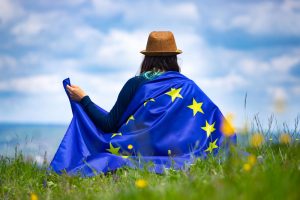 The European Union (EU) has set out plans to create a climate-neutral continent. How will this impact the textile industry and what solutions are available?
The European Union (EU) has set out plans to create a climate-neutral continent. How will this impact the textile industry and what solutions are available?
TW Special Report
“Our goal is to reconcile the economy with our planet, to reconcile the way we produce, the way we consume with our planet…the old growth model that is based on fossil fuels and pollution is out of date.” Ursula von der Leyen, European Commission President, 2019.*
What is the Green Deal?
The European Green Deal (EGD) is a set of initiatives that commits all 27 Member States to transforming the EU into a modern, resource-efficient and competitive economy. It commits them to:
- No net emissions of greenhouse gases by 2050;
- Decoupling economic growth from resource use; and
- Ensuring no person and no place is left behind.
Impact on the textile industry
Textile consumption has been identified by the EU as having the fourth highest impact on the environment, after food, housing and mobility. It is also one of the top three pressures on water and land use and top five for resource use and greenhouse gas emissions. Set against these negatives, the industry does employ more than 1.5 million citizens.
The EU has therefore set several goals for the textile industry. By 2030, all textile products must be:
- Durable, repairable and recyclable;
- Largely made from recycled fibers;
- Free from hazardous substances; and
- Produced in ways that respect social rights.
Impact on chemical use
The ‘Environment and oceans’ section of the EGD contains a specific strategy for chemicals – ‘Chemicals strategy for sustainability’ – which includes nearly one hundred actions. Its primary objectives are:
- Better protection for citizens and the environment;
- Boosting innovation in safe and sustainable chemicals; and
- Enabling a transition to safe and sustainable chemical use – by design.
Current regulations and directives, such as Regulation (EC) No 1907/2006 on Registration, Evaluation, Authorization and Restriction of Chemicals (REACH) and Regulation (EC) 1272/2008 on Classification, Labeling and Packaging of Substances and Mixtures (CLP), will be directly impacted by the EGD. Therefore, its impact on the textile industry will be great.
Safety and sustainability by design
The EU is looking to create multiple drivers for change. These include developing sustainable-by-design criteria to help companies remove substances of concern from the complete product lifecycle by substituting safer alternatives. In addition, they are looking to:
Measure industrial transition by introducing key performance indicators (KPI)
Amend IED (2010/75/EU) to include requirements for on-site assessments and restrictions on substances of very high concern (SVHC)
The EU’s strategy prioritizes a range of substances:
- Carcinogenic, mutagenic and reprotoxic substances (CMRs);
- Endocrine disruptors;
- Persistent, bioaccumulative and toxic (PBT) and very persistent and very bioaccumulative (vPvB) substances;
- Immunotoxicants;
- Neurotoxicants; and
- Substances toxic to specific organs and respiratory sensitizers.
In the future, a substance might automatically be restricted once there is evidence that it falls into one of these categories.
The EU operates a zero-tolerance approach to companies that fail to comply with REACH. Compliance audits will therefore be required in Member States and enforcement checks will be targeted at known areas of non-compliance, such as e-commerce sites, imports and CLP failures.
Moving forward
The market for greener textile products already exists. With the EGD, the EU is tapping into something that consumers are already demanding. Through legislation and positive exemplars, e.g., greener police uniforms, this market is set to grow as consumers become better informed and they are able to make more sustainable purchasing decisions.**
The EU may be leading the way, but this is a global trend. Forward-thinking manufacturers are already producing sustainable and responsibility sourced products to compete in these competitive, growing markets.
For some textile and garment manufacturers, this may be a new way of thinking and working. It is clear there is a commercial advantage in switching to more sustainable design and production methods but without expert support, it may be hard for them to meet the demands of the markets and the requirements of the EGD.
SGS Solution
Bluesign®, a member of the SGS Group, is a holistic system that provides solutions in sustainable processing and manufacturing for the textile and clothing industries. Based on strict criteria, it supports and enables a company’s sustainable development, including corporate responsibility.
It provides a tool by which manufacturers can design a more sustainable business model, including access to a positive list for chemical substitution — replacing non-assessed and non-rated chemistry with safer and more sustainable alternatives.
Materials produced within a value chain assessed by bluesign can carry the bluesign®APPROVED label. Among other things, this means they are SVHC-free. A product can carry the bluesign®PRODUCT label if at least 90% of the textiles and 30% of accessories within it carry the bluesign®APPROVED logo.
Bluesign empowers manufacturers to ensure their supply chain is delivering products in accordance with strict sustainability criteria. With consumer demand for sustainable products increasing and the provisions of the EU EGD coming into effective, bluesign® offers manufacturers a better way to succeed in ever-changing competitive markets.
References:
*https://fashionunited.com/news/business/what-does-the-eu-s-green-deal-mean-for-the-textile-industry/2019121331305
**https://fashionunited.com/news/business/what-does-the-eu-s-green-deal-mean-for-the-textile-industry/2019121331305
July 28, 2022




